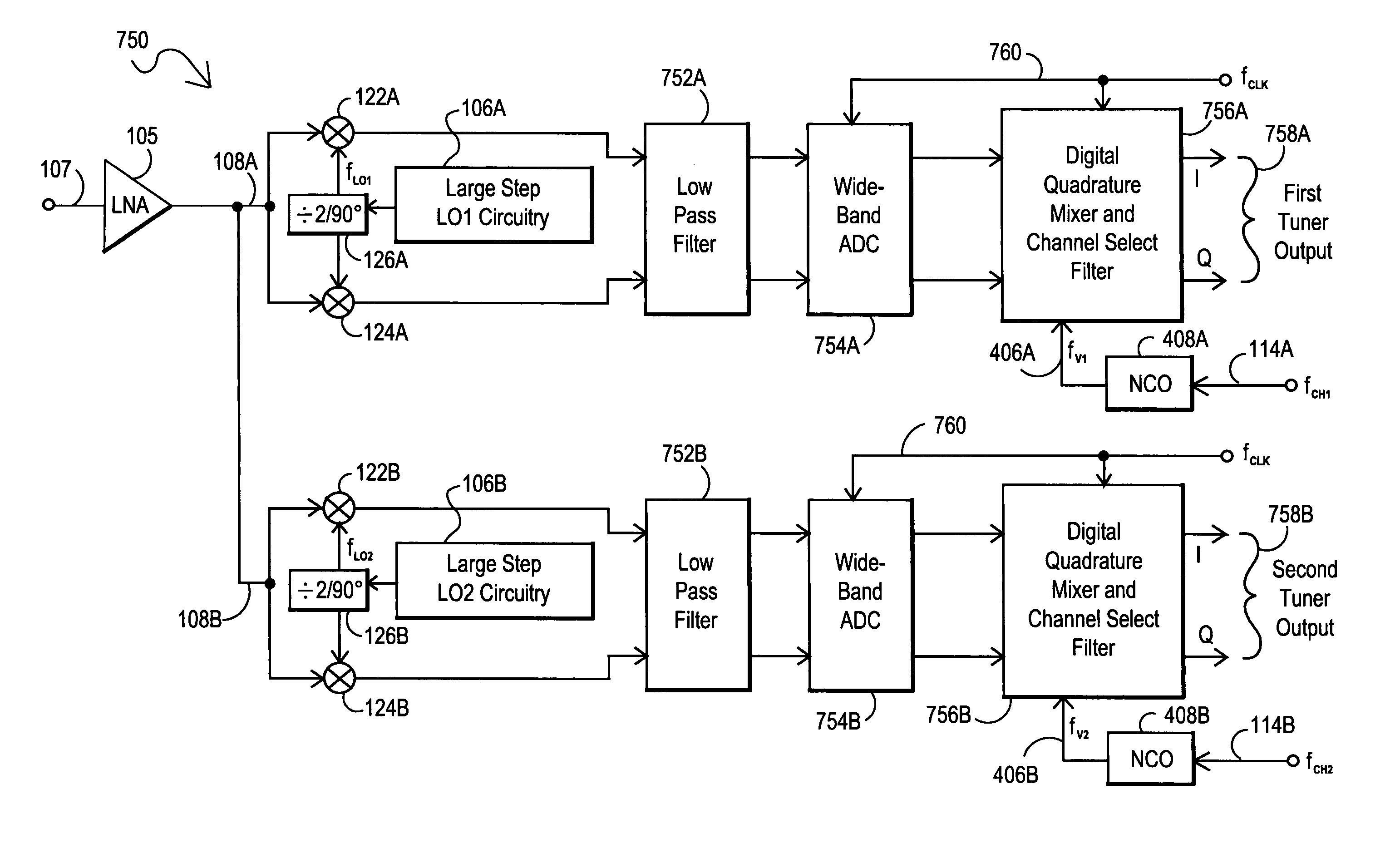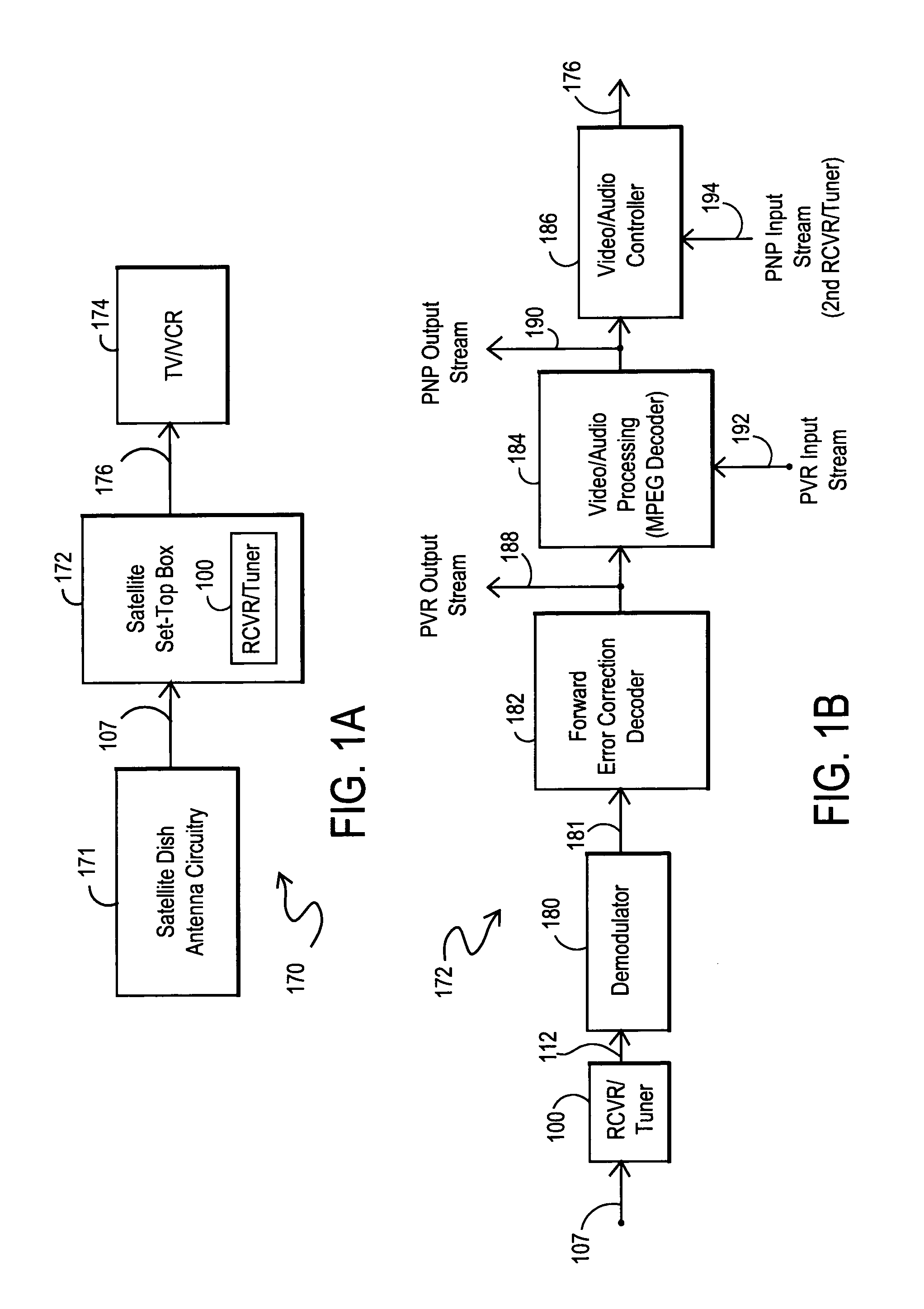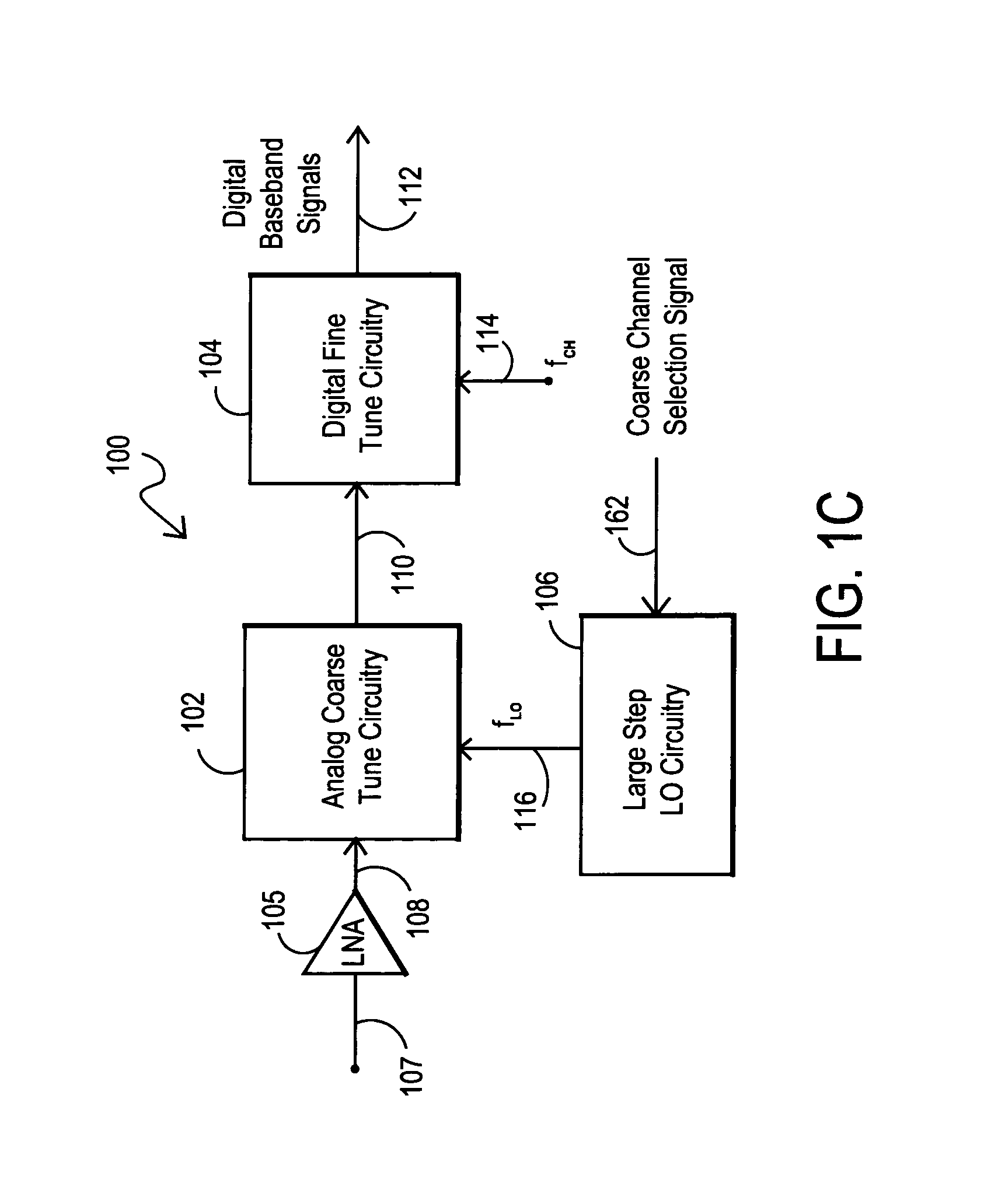Integrated multi-tuner satellite receiver architecture and associated method
a satellite receiver and multi-tuner technology, applied in the field of high-frequency transmission satellite receiver architectures, can solve the problems of 1/f noise from baseband circuitry, dc offset voltage noise, and the inability to design integrated circuit implementations that use ddc architectures. the effect of noise and interferen
- Summary
- Abstract
- Description
- Claims
- Application Information
AI Technical Summary
Benefits of technology
Problems solved by technology
Method used
Image
Examples
embodiment 300
[0045]Looking to channel 308 in FIG. 3, it is located within the channel spectrum such that it overlaps the LO frequency for BIN2 and the boundary of BIN1 and BIN2, which are both designed to be located at about 1050 MHz. As discussed above with respect to FIG. 2C, the LO mixing frequency fLO2 would not be used to avoid a direct down conversion of channel 308 to DC. Rather, the LO mixing frequency fLO1 for BIN1 or the LO mixing frequency fLO3 for BIN3 could be used to mix down the channel 308. It is noted that by having overlapping frequency bins, an LO frequency closer to the center frequency for the desired channel 308 could be used. For example, if only the non-overlapping even numbered bins 322 were provided in the embodiment 300, the next adjacent LO mixing frequency would have been LO mixing frequency fLO4 for BIN4, which is 100 MHz from the LO mixing frequency fLO2 for BIN2, rather than the 50 MHz frequency step between the LO frequencies for BIN2 and BIN1 and for BIN2 and BI...
embodiment 500
[0047]FIG. 5A is a block diagram of an embodiment 500 for a two receiver architecture located on a single integrated circuit. In general, this embodiment 500 duplicates the circuitry of FIG. 1C to produce a dual receiver architecture. The first receiver includes analog coarse tune circuitry 102A, large-step LO1 circuitry 106A (which outputs a first LO mixing frequency (fLO1)116A), and digital fine tune circuitry 104A (which receives a first center frequency (fCH1) 114A for a first desired channel to be tuned). As discussed above, the first receiver coarsely tunes the input channel spectrum 108A to produce the intermediate coarsely tuned channel signal 110A and then digitally processes this signal to finely tune the channel and to produce digital baseband signals for the first tuner output 112A. Similarly, the second receiver includes analog coarse tune circuitry 102B, large-step LO2 circuitry 106B (which outputs a second LO mixing frequency (fLO2)116B), and digital fine tune circuit...
embodiment 700
[0062]FIG. 9A is a block diagram of the multi-stage architecture 900 for a digital down-converter and decimator 706 usable in the embodiment 700 of FIG. 7B. The input 712 from a bandpass ΔΣ ADC 704 is processed by a series of cascaded stages, which as shown include STAGE1910A, STAGE2910B . . . STAGE(N) 910C. Each stage provides an output to the next stage, as indicated by signal 905 from STAGE1910A to STAGE2910B and by signal 982 that would be from STAGE(N−1) to STAGE(N) 910C. It is noted that the stages 910A, 910B . . . 910C (STAGE1, STAGE2 . . . STAGE(N)) could all be implemented with similar circuitry, if desired.
[0063]FIG. 9B is a block diagram of example circuitry for stages 910 within the multi-stage architecture of FIG. 9A. In the stage embodiment depicted, the stage input is received by mixer 906, which digitally mixes the stage input with a mixing signal 912. The resulting signal is passed through a low pass filter (LPF) 902. This LPF 902 can be tunable, if desired, and the...
PUM
 Login to View More
Login to View More Abstract
Description
Claims
Application Information
 Login to View More
Login to View More - R&D
- Intellectual Property
- Life Sciences
- Materials
- Tech Scout
- Unparalleled Data Quality
- Higher Quality Content
- 60% Fewer Hallucinations
Browse by: Latest US Patents, China's latest patents, Technical Efficacy Thesaurus, Application Domain, Technology Topic, Popular Technical Reports.
© 2025 PatSnap. All rights reserved.Legal|Privacy policy|Modern Slavery Act Transparency Statement|Sitemap|About US| Contact US: help@patsnap.com



